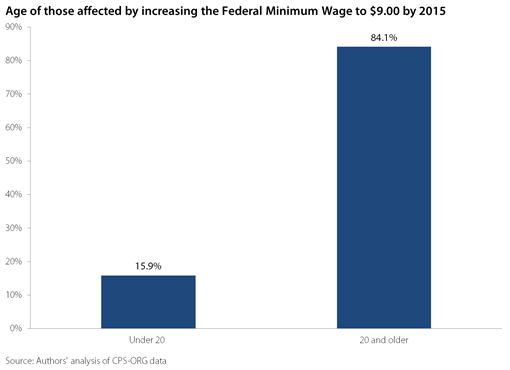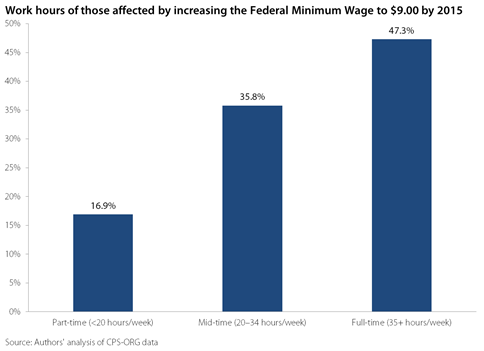Who Would Benefit From a Higher Minimum Wage?
In the wake of President Obama's proposal to raise the minimum wage to $9 an hour, critics of the proposal are repeating the familiar point that it is mainly teenagers and part-time workers who earn the minimum wage -- groups that supposedly don't need much of a boost in their wages.
Is that true? A succinct answer comes from a recent blog post by Doug Hall and Natalie Sabadish of the Economic Policy Institute. Here's what they wrote:
It is a common misconception that the minimum wage workforce is comprised mostly of teenagers working part-time to make a little extra spending money. This is decidedly not the case; rather, the vast majority – 84.1 percent – of those benefiting from the proposed increase to $9.00 are at least 20 years old. This means that less than 16 percent of the workers impacted by the President’s proposal are teenagers. Additionally, about half (47.3 percent) of the 18 million affected workers are full-time employees, working at least 35 hours per week. Another 35.8 percent work between 20 and 34 hours per week, and only 16.9 percent work less than 20 hours a week. It is clear that the bulk of minimum wage workers are mid- or full-time adult employees, not teenagers or part-timers. (However, the fact that some of these workers are teens and part-timers who are working only to make some additional disposable income is not justification for paying them subpoverty wages.)
Though a minimum wage increase would help both men and women, it would disproportionately impact working women. Nearly three-fifths (57.4 percent) of those affected by the President’s proposal would be women. The proposed minimum wage hike would also help workers across all races and ethnicities. Just over half (53.1 percent) of those impacted are white, non-Hispanic workers. A quarter (25.2 percent) are Hispanic, 14.8 percent are non-Hispanic African Americans, and 6.9 percent are Asian or another race.
A minimum wage increase to $9.00 would benefit mostly low- to middle-income families. About 70 percent of affected families have a family income less than $60,000. (Median family income was $60,974 in 2011.) Among those that would benefit, over half (54.2 percent) are part of families that earn less than $40,000 per year, and a quarter have an annual family income of less than $20,000.


